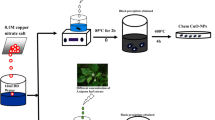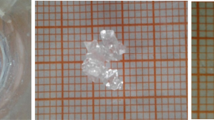Abstract
Inclusion of one of the natural enantiomers of linalool ((R)-(-)-linalool, simply LIN) into cucurbit[n]urils (CB[n]s) was investigated by means of DFTB + and DFT computations with Grimme’s dispersion correction and geometric counterpoise treatment. Among different cucurbit[n = 5 ~ 9]urils, some diastereoisomers of CB[7] can form relatively stable inclusion complexes (LIN@CB[n]s) with LIN in water. Hydrogen bonds and dispersion interaction between CB[n] and LIN play an important role in formation of the inclusion complexes. Molecular electrostatic potential, non-covalent interaction, and natural bond analysis were carried out for interpretation of stability of the relatively stable LIN@CB[7]s. Theoretical computations showed that LIN@i-CB[7] was the most stable and it can offer increased solubility to linalool in water than the normal CB[7]. The calculated electronic spectra of linalool, i-CB[7], and LIN@i-CB[7] showed that inclusion of linalool into i-CB[7] can be useful in protection of linalool from photo-degradation.







Similar content being viewed by others
References
Ulland S, Ian E, Borg-Karlson AK, Mustaparta H (2006) Discrimination between enantiomers of linalool by olfactory receptor neurons in the Cabbage Moth Mamestra brassicae (L.). Chem Senses 31:25
Pavela R, Benelli G (2016) Essential oils as ecofriendly biopesticides? Challenges and constraints Trends Plant Sci 21:1000
de Oliveira JL, Campos EVR, Bakshi M, Abhilash PC, Fraceto LF (2014) Application of nanotechnology for the encapsulation of botanical insecticides for sustainable agriculture: Prospects and promises. Biotechnol Adv 32:1550
Ishiguro T, Sakata Y, Arima H, Iohara D, Anraku M, Uekama K, Hirayama F (2018) Release control of fragrances by complexation with β-cyclodextrin and its derivatives. J Incl Phenomena Macrocyc Chem 92:147
Xiao Z, Xu Z, Zhu G (2017) Production and characterization of nanocapsules encapsulated linalool by ionic gelation method using chitosan as wall material. Food Sci Technol 37:613
Lyu Y, Ren H, Yu M, Li X, Li D, Mu C (2017) Using oxidized amylose as carrier of linalool for the development of antibacterial wound dressing. Carbohyd Polym 174:1095
Rani PU, Madhusudhanamurthy J, Sreedhar B (2014) Dynamic adsorption of α-pinene and linalool on silica nanoparticles for enhanced antifeedant activity against agricultural pests. J Pest Science 87:191
Ayhan MM, Ozcan E, Alkan F, Cetin M, İlker UD, Bardelang BC (2022) External complexation of BODIPYs by CB[7] improves in-cell fluorescence imaging. Mater Adv 3:547
Sin K, Ko S, Kim C, Kim H, Son M (2018) Theoretical investigation on electronic structure and stability of some inverted cucurbiturils by density functional theory. Supramol Chem 31:95
Fedorova OA, Chernikova EY, Tkachenko SV, Grachev AI, Godovikov IA, Fedorov YV (2019) Self-sorting processes in a stimuli-responsive supramolecular systems based on cucurbituril, cyclodextrin and bisstyryl guests. J Incl Phenom Macrocycl Chem 94:201
Sin K, Kim C, Ko S, Hwang T, Han Y, Pak Y (2022) Inclusion of thymol into cucurbiturils: density functional theory approach with dispersion correction and natural bond orbital analysis. J Incl Phenom Macrocycl Chem. https://doi.org/10.1007/s10847-022-01135-4
del Pozo M, Fernández Á, Quintana C (2018) On-line competitive host-guest interactions in a turn-on fluorometric method to amantadine determination in human serum and pharmaceutical formulations. Talanta 79:124
Gangemi CMA, Puglisi R, Pappalardo A, Sfrazzetto GT (2018) Supramolecular complexes for nanomedicine. Bioorg Med Chem Lett 28:3290
Sin K, Ko S, Kim C, Pak S, Kim H, Kim C (2020) Quantum Chemical Investigation on Interaction of 5-Fluorouracil with Cucurbiturils. Monatshefte für Chemie - Chemical Monthly 151:721
Seifert G, Joswig J (2012) Density-functional tight binding-an approximate density-functional theory method. WIREs Comput Mol Sci 2:456
Zerrouki1 M, Benkaci-Ali F (2018) DFT study of the mechanisms of nonenzymatic DNA repair by phytophenolic antioxidants. J Mol Modeling 24:78
Jitonnom J, Ketudat-Cairns JR, Hannongbua S (2017) QM/MM modeling of the hydrolysis and transfructosylation reactions of fructosyltransferase from Aspergillus japonicas, an enzyme that produces prebiotic fructooligosaccharide. J Mol Graphics Modelling 79:175
Venkataramanan NS, Suvitha A, Kawazoe Y (2018) Unravelling the nature of binding of cubane and substituted cubanes within cucurbiturils: A DFT and NCI study. J Mol Liquids 260:18
Yang L, Li D, Guo B, Wei D (2019) Theoretical study on the inclusion interaction of β-cyclodextrin with gabapentin and its stability. J Struct Chem 60:564
Lukin O, Dolgonos G, Leszczynski J (2017) A comprehensive test of computational approaches for evaluation of cyclodextrin complexes. Self-inclusion in monosubstituted β-cyclodextrins–a case study. Tetrahedron 73:5302
Damnjanović M, Tatjana V, Ivanka M (2016) Symmetry-based Study of MoS2 and WS2 Nanotubes. Israel J Chem 57:450
Neto AMJC, Mota GVS, Borges RS, Albuquerque MLS (2010) R-(-)-linalool UV spectroscopy: The experimental and theoretical Study. J Comput Theor Nanosci 7(2):1
Jankovic N, Markovic S, Bugarcic Z (2014) DFT study of the mechanism of the phenylselenoetherification reaction of linalool. Monatsh Chem 145:1287
Ahmed SA, Seth S, Gautam RK, Seth D (2018) Inclusion of a coumarin derivative inside the macrocyclic hosts: A spectroscopic, thermodynamic and theoretical investigation. J Mol Liquids 264:550
Mirzaeva IV, Moroz NK, Andrienko IV, Kovalenko EA (2018) Interaction between carboplatin and cucurbit[7]uril studied by means of multinuclear NMR spectroscopy and DFT calculations. J Mol Struct 1163:68
Kruse H, Goerigk L, Grimme S (2012) Why the standard B3LYP/6-31G* model chemistry should not be used in DFT calculations of molecular thermochemistry: Understanding and correcting the problem. J Org Chem 77:10824
Neese F, Wennmohs F (2019) ORCA (An ab initio, DFT and semiempirical SCF-MO package - Version 4.2.1). Max-Planck-Institut für Kohlenforschung, Ruhr, Germany
Petersson GA, Bennett A, Tensfeldt TG, Al-Laham MA, Shirley WA, Mantzaris J (1988) A complete basis set model chemistry. I. The total energies of closed-shell atoms and hydrides of the first-row atoms. J Chem Phys 89:2193
Petersson GA, Malick DK, Wilson WG, Ochterski JW, Montgomery JA Jr, Frisch MJ (1998) Calibration and comparison of the Gaussian-2, complete basis set, and density functional methods for computational thermochemistry. J Chem Phys 109:10570
Grimme S, Ehrlich S, Goerigk L (2011) Effect of the damping function in dispersion corrected density functional theory. J Comput Chem 32:1456
Grimme S, Antony J, Ehrlich S, Krieg H (2010) A consist and accurate ab Initio parameterization of density functional dispersion correction (DFT-D) for the 94 elements H-Pu. J Chem Phys 132:154104
Cossi M, Rega N, Scalmani G, Barone V (2003) Energies, structures, and electronic properties of molecules in solution with the C-PCM solvation model. J Comput Chem 24:669
Contreras-Garcia J, Johnson ER, Keinan S, Chaudret R, Piquemal J, Beratan DN, Yang W (2011) NCIPLOT: A program for plotting noncovalent interaction regions. J Chem Theor Comp 7:625
Jmol (2017) An open-source Java viewer for chemical structures in 3D. Available from: http://sourceforge.net/projects/jmol/
Depizzol DB, Paiva MHM, Dos Santos TO, Gaudio AC (2005) MoCalc: A new graphical user interface for molecular calculations. J Comput Chem 26:142
Nora M, Fatiha M, Leila N, Sakina H, DjamelEddine K (2015) Density functional study of inclusion complex of Albendazole/cucurbit[7]uril: Structure, electronic properties, NBO, GIAO and TD-DFT analysis. J Mol Liquids 211:40
Glendening ED, Landis CR, Weinhold F (2012) Natural bond orbital methods. WIREs Comput Mol Sci 2:1
Glendening ED, Badenhoop JK, Reed IE, Carpenter JE, Bohmann JA, Morales CM, Weinhold F (2001) NBO. Version 3.1 Theoretical Chemistry Institute. University of Wisconsin, Madison, WI
Costa MPM, Pratesa LM, Baptistab L, Cruza MTM, Ferreira ILM (2018) Interaction of polyelectrolyte complex between sodium alginate and chitosan dimers with a single glyphosate molecule: A DFT and NBO study. Carbohyd Polym 198:51
Zerner M, Loew GH, Kirhner RF, Mueller-Westerhoff UT (1980) An intermediate neglect of differential overlap technique for spectroscopy of transition-metal complexes. Ferrocene J Am Chem Soc 102:589
Rezvani M, Ganji MD, Jameh-Bozorghi S, Niazi A (2018) DFT/TD-semiempirical study on the structural and electronic properties and absorption spectra of supramolecular fullerene-porphyrinemetalloporphyrine triads based dye-sensitized solar cells. Spectrochimica Acta Part A: Mol Biomol Spectroscopy 194:57
Author information
Authors and Affiliations
Contributions
K.R. Sin designed simulations, C.J. Kim prepared models, S.G. Ko calculated the geometric structures, T.M. Hwang calculated the electronic structures, K.H. Pak discussed NBO analysis, and M.B. Kim wrote the manuscript.
Corresponding author
Ethics declarations
Competing interests
The authors declare no competing interests.
Conflict of interest
The authors declare no competing interests.
Geolocation information
Faculty of Chemistry, Kim Il Sung University, Ryongnam-Dong, Taesong District, Pyongyang, Democratic People’s Republic of Korea.
Additional information
Publisher's Note
Springer Nature remains neutral with regard to jurisdictional claims in published maps and institutional affiliations.
Highlights
• Inclusion complexes of linalool into cucurbiturils in aqueous solution were studied by DFTB + and DFT.
• Inverted CB[7]s can form more stable inclusion complexes than other CB[n]s.
• Hydrogen bond and non-covalent interaction play an important role for inclusion.
Supplementary Information
Below is the link to the electronic supplementary material.
11224_2023_2191_MOESM1_ESM.docx
Supplementary file1 Supplementary data to this article (atomic coordinates , bond length changes, natural populations for LIN@CB[7]s) can be found online at http://dx.doi.org/xxx. (DOCX 374 KB)
Rights and permissions
Springer Nature or its licensor (e.g. a society or other partner) holds exclusive rights to this article under a publishing agreement with the author(s) or other rightsholder(s); author self-archiving of the accepted manuscript version of this article is solely governed by the terms of such publishing agreement and applicable law.
About this article
Cite this article
Sin, KR., Kim, CJ., Ko, SG. et al. Quantum chemical study on inclusion of linalool into cucurbiturils. Struct Chem 35, 413–420 (2024). https://doi.org/10.1007/s11224-023-02191-3
Received:
Accepted:
Published:
Issue Date:
DOI: https://doi.org/10.1007/s11224-023-02191-3




